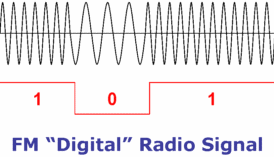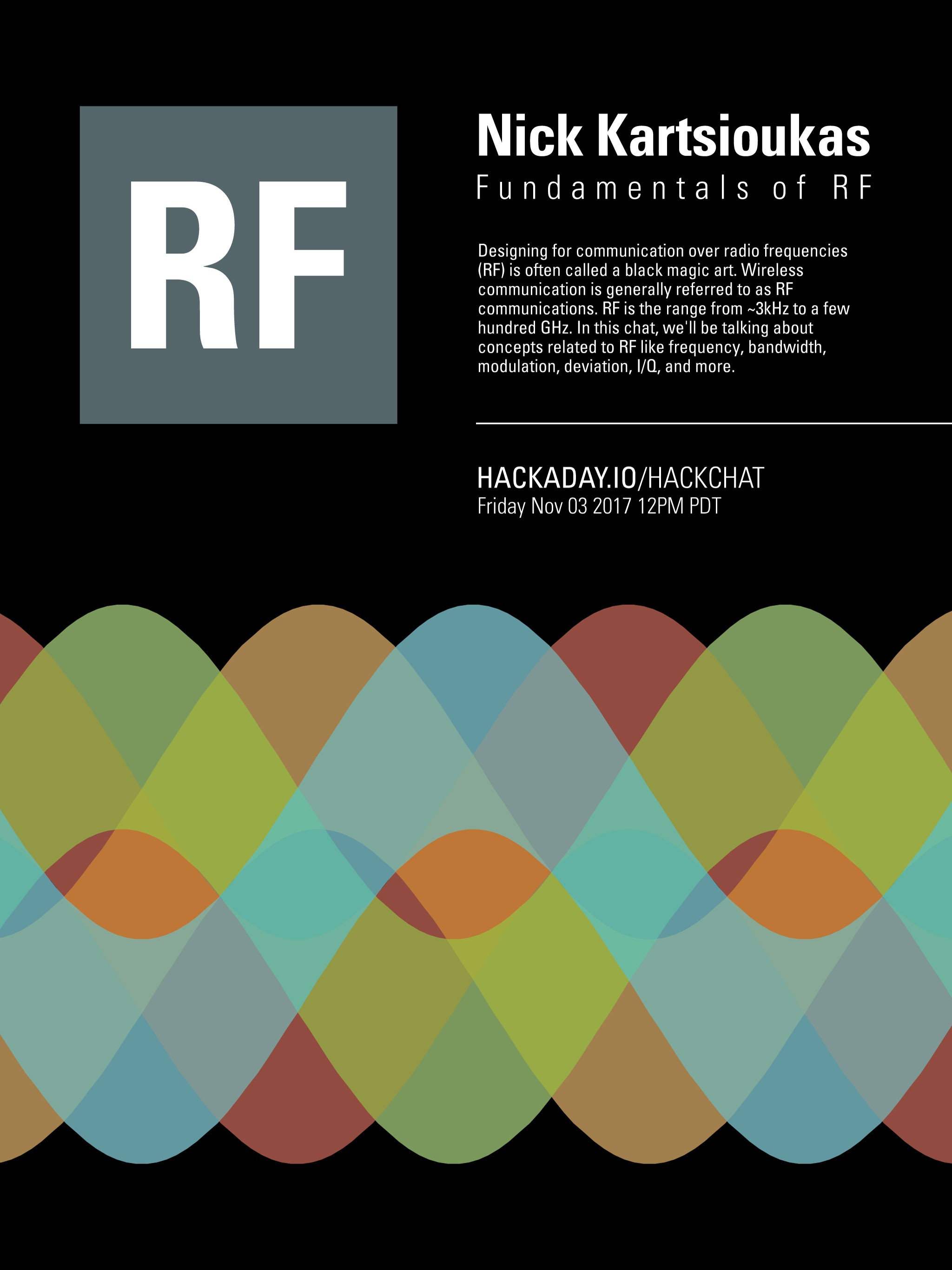Join this Hack Chat by clicking on the JOIN HACK CHAT button.
____________________________________________________________
Nick Kartsioukas will be hosting the Hack Chat this week.
This Hack Chat is at noon PDT, Friday, November 3rd.
Time Zones got you down? Here's a handy count down timer!
Designing for communication over radio frequencies (RF) is often called a black magic art. Wireless communication is generally referred to as RF communications. RF is the range from ~3kHz to a few hundred GHz. In this chat, we'll be talking about concepts related to RF like frequency, bandwidth, modulation, deviation, I/Q, and more.
Nick has been a licensed amateur radio operator since 1999, and currently holds an extra-class license. He has a background in Linux system administration, network engineering (including wireless networking), and information security. At home he plays around with RC aircraft, radio and antenna projects, SDR, embedded Linux systems, anmicrocontrollers.
Ever wonder how bits get turned into radio waves (and back again?) Or if you've ever wondered how many bits can be stuffed into a radio wave (and how to figure that out), join to learn some of the basics of RF, digital modulation, and information theory.

TL;DR
Nick will be discussing RF basics.
- What is RF?
- RF frequencies
- How bandwidth is incorporated into designs
- Frequency modulation and what that means
- Plus some other RF concepts like deviation and I/Q
Please add your questions to the discussion sheet!

